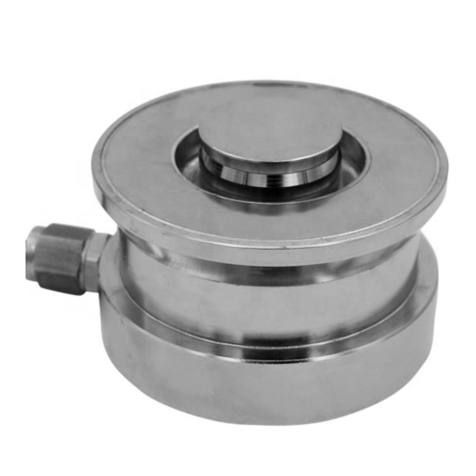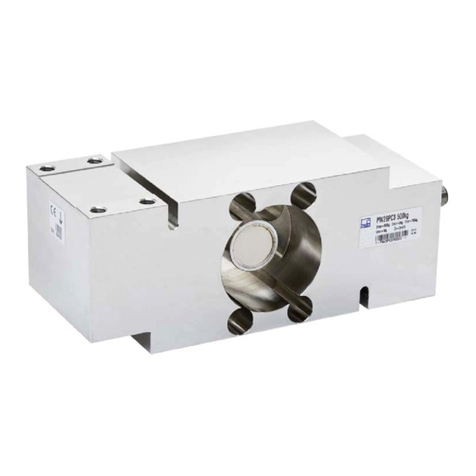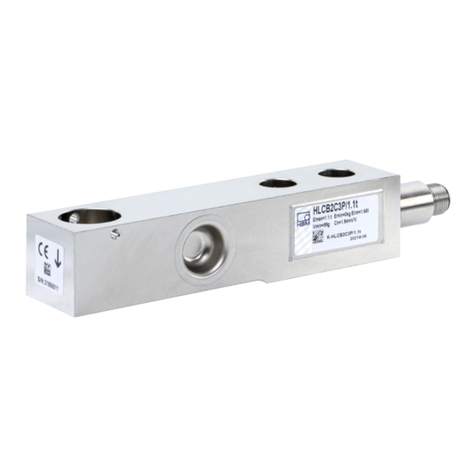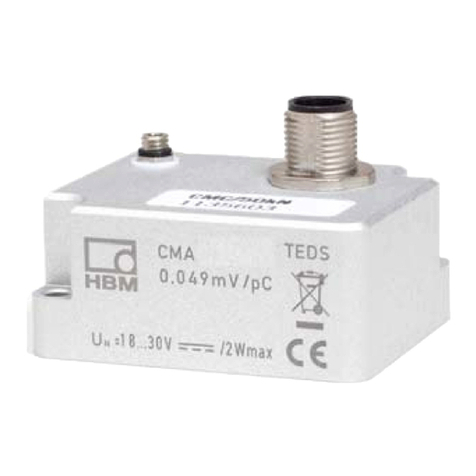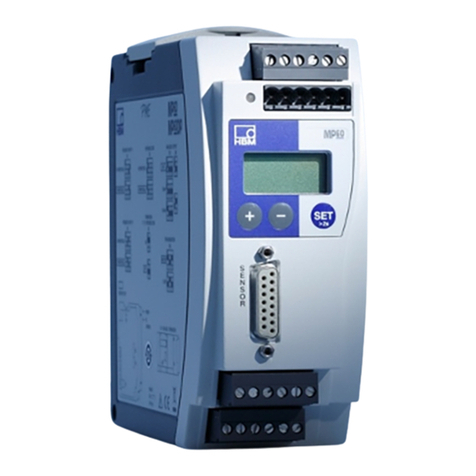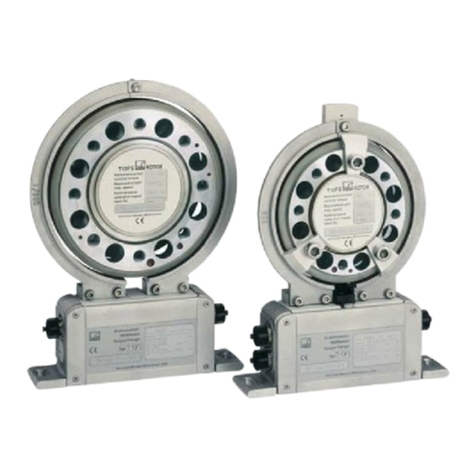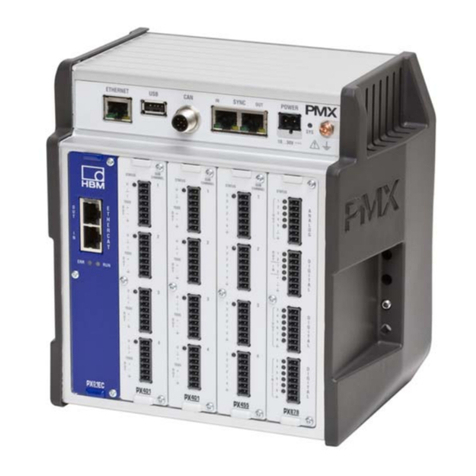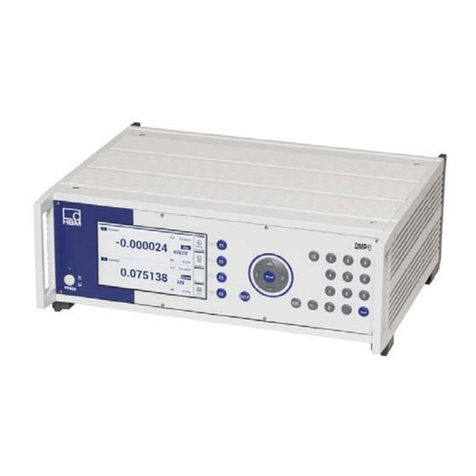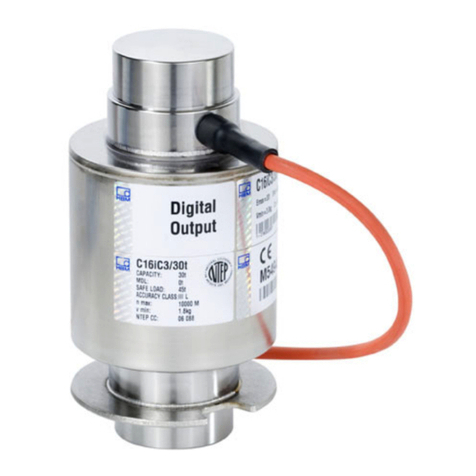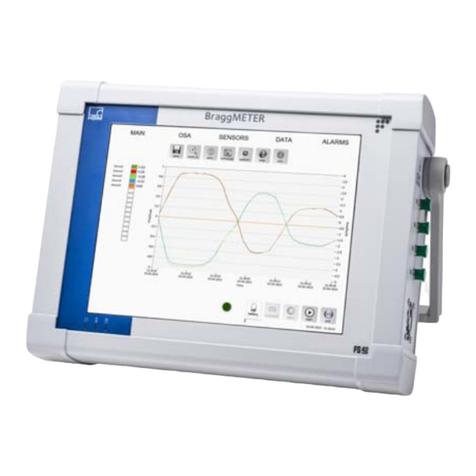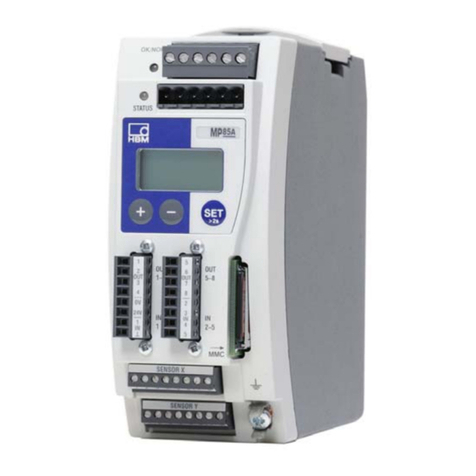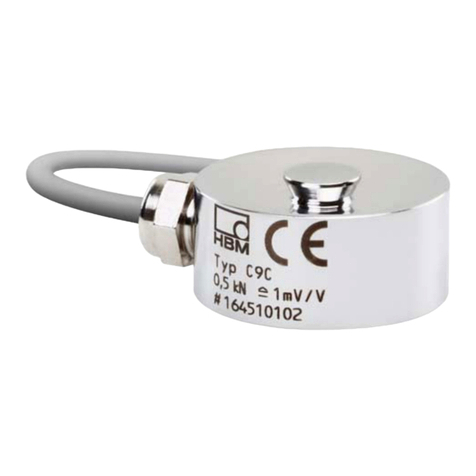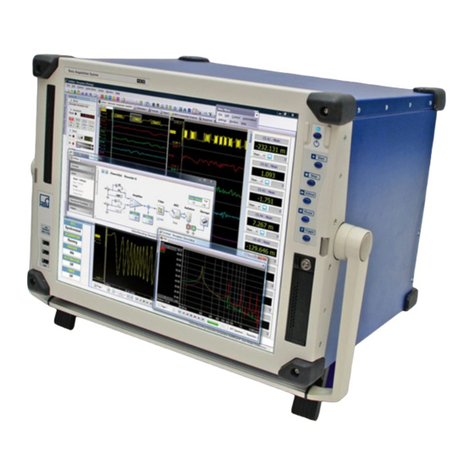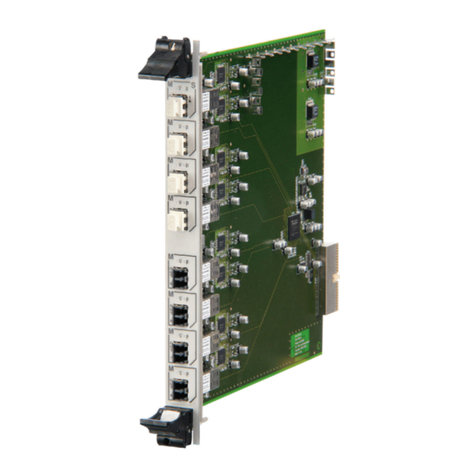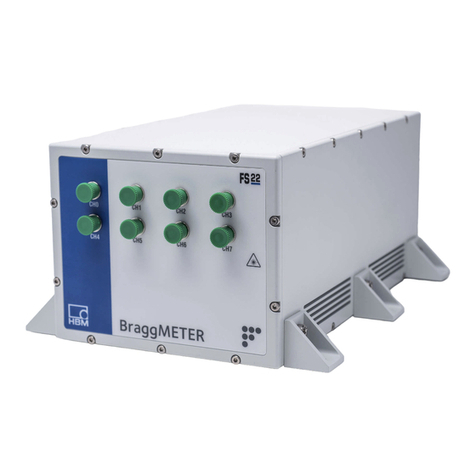
Safety instructions
4A03616_04_YI0_02 HBM: public CLP
When several force transducers are connected, it must be noted that the load/
force distribution is not always uniform.
Use as a machine element
Force transducers can be used as machine elements. When used in this man
ner, it must be noted that, to favor greater sensitivity, the force transducers
were not designed with the safety factors usual in mechanical engineering.
Please refer here to the section "Load-carrying capacity limits", and to the
specifications.
Additional safety precautions
Force transducers cannot (as passive transducers) implement any safety-rele
vant cutoffs. This requires additional components and constructive measures,
for which the installer and operator of the plant is responsible.
In cases where a breakage or malfunction of the force transducer would cause
injury to persons or damage to equipment, the user must take appropriate addi
tional safety measures that meet at least the requirements of applicable safety
and accident prevention regulations (e.g. automatic emergency shutdown,
overload protection, catch straps or chains, or other fall protection).
The electronics conditioning the measurement signal should be designed so
that measurement signal failure does not subsequently cause damage.
General dangers of failing to follow the safety instructions
Force transducers are state-of-the-art and failsafe. There may be dangers in
volved if the transducers are mounted, sited, installed and operated inappropri
ately, or by untrained personnel. Every person involved with siting, starting-up,
operating or repairing a force transducer must have read and understood the
mounting instructions and in particular the technical safety instructions. The
force transducers can be damaged or destroyed by non-designated use of the
force transducer or by non-compliance with the mounting and operating instruc
tions, these safety instructions or any other applicable safety regulations (BG
safety and accident prevention regulations) when using the force transducers.
Force transducers can break, particularly if overloaded. The breakage of a
force transducer can also cause damage to property or injury to persons in the
vicinity of the force transducer.












